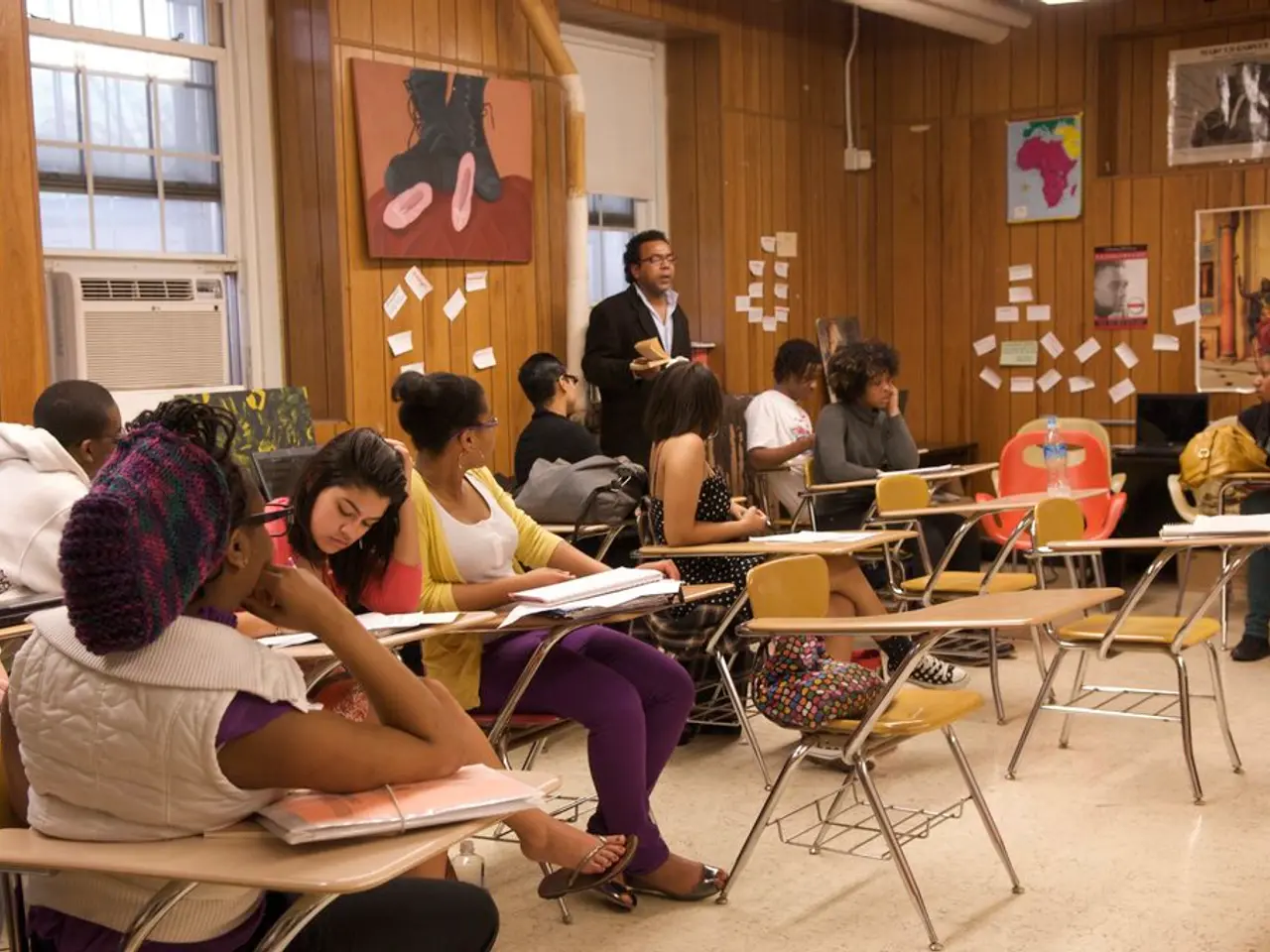Online Education Strategies for Pupil Achievement
In the wake of the pandemic, a shift from traditional in-person teaching to virtual learning has become a necessity in K-12 education. A recent whitepaper from Edmentum underscores the critical need to explore the role of virtual learning in addressing current educational challenges, such as a student mental health crisis, learning loss, and teacher burnout.
The success of district virtual programs hinges on several key factors. Establishing a community of learners, including teachers, mentors, and parents/guardians, is crucial in a virtual learning environment. This community fosters relationships that are essential for creating powerful learning experiences and supporting students' emotional and educational needs.
Digital learning coaches, support staff, and families must understand the needs and struggles of each student to ensure that they are engaged and connected to their learning. Providing accessibility tools allows students to focus on learning and levels the playing field, ensuring that all students can access their education.
Virtual schools should focus on targeted professional development for educators, aligning with four online teaching competencies: amplified communication skills, strong time management skills, focused planning time, and the ability to adapt content and instruction to meet the needs of students with learning difficulties.
Mentorship programs can help monitor student progress, resolve issues, and provide additional support. Family support is also critical, as parents/guardians can better understand their child's learning style, needs, or curriculum.
High-quality online instruction and a well-designed curriculum are essential for students' success in virtual programs. Teaching effectively in virtual environments requires different strategies than traditional teaching, emphasizing student-centered learning and active learning activities.
Before March 2020, virtual learning was primarily used for credit recovery, remediation, and advanced coursework. However, since then, virtual learning options continue to grow, with hybrid options proving effective in certain situations. Districts have since returned to in-person learning, but the importance of virtual learning as a viable educational alternative remains.
It is critical for successful district virtual programs to have a person who oversees the program, identifies opportunities to improve communication with and supports parents and other stakeholders, and ensures that students and educators have the resources they require to be successful. Holly Brzycki, CAOLA, emphasizes this point, stating, "It is critical for successful district virtual programs to have a person who oversees the program, identifies opportunities to improve communication with and supports parents and other stakeholders, and ensures that students and educators have the resources they require to be successful."
Three significant school districts in the United States known for using virtual learning and having a leader for their virtual programs are the Evergreen School District in San Jose, CA; Tacoma Public Schools in Tacoma, WA; and the districts of Arlington and Fairfax in Virginia. Each of these districts has dedicated leadership or programs guiding their virtual learning efforts.
Virtual learning programs should consider three key equity areas: technology, academic and mental wellness, and accessibility. Providing students with sufficient bandwidth and a device capable of supporting online learning is crucial to ensuring that all students can participate in virtual learning experiences.
In conclusion, the role of virtual learning in addressing current educational challenges is increasingly important. By focusing on targeted professional development, establishing supportive communities, and prioritizing student needs, we can create a virtual learning environment that enhances student success and addresses the challenges faced by the education system today.
Read also:
- California's Democratic Governor Newsom's drive for new House district maps is not set in stone, despite the heavily Democratic lean of the state.
- Comprehensive Cancer Care Strategy Encompassed by Siemens Healthineers Entirely
- Romanian ex-Prime Minister Victor Ponta ousted from PSD following independent presidential campaign launch
- Federal solar energy initiatives among Wyoming's tribal communities face varying outcomes following the Trump Administration's withdrawal of funding.




